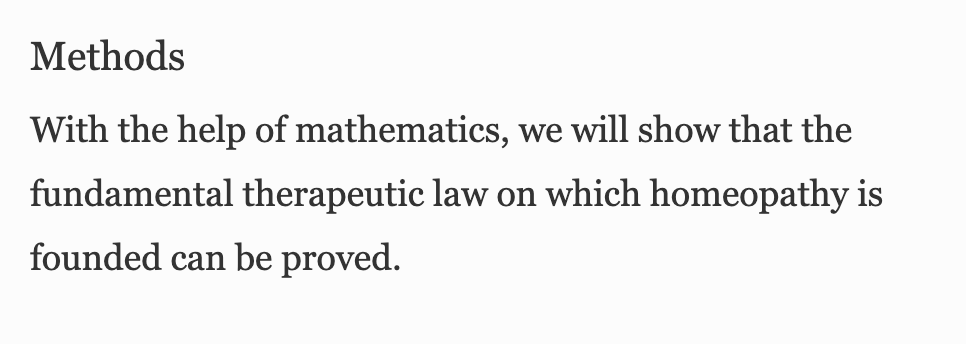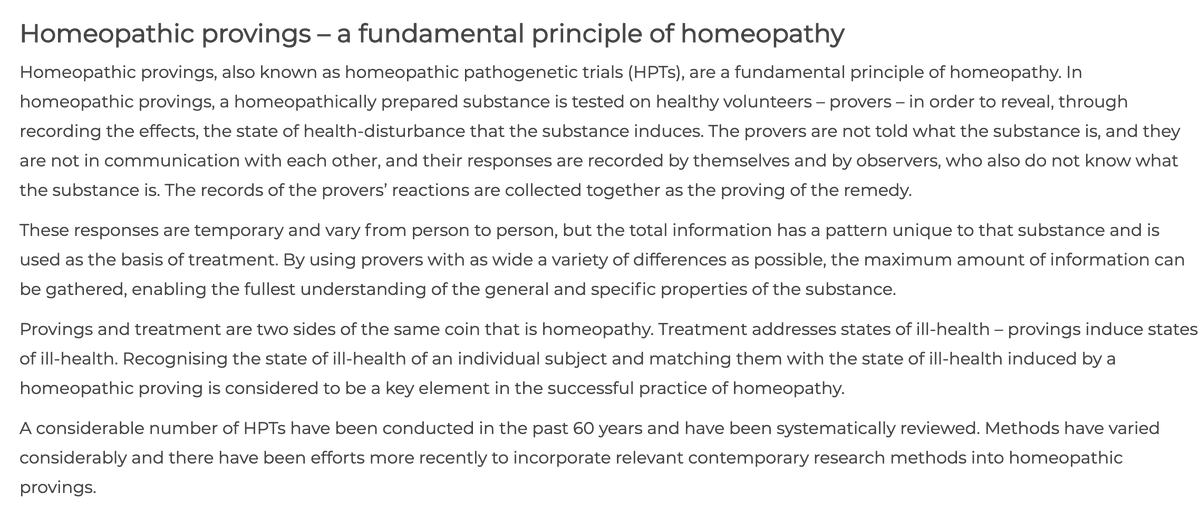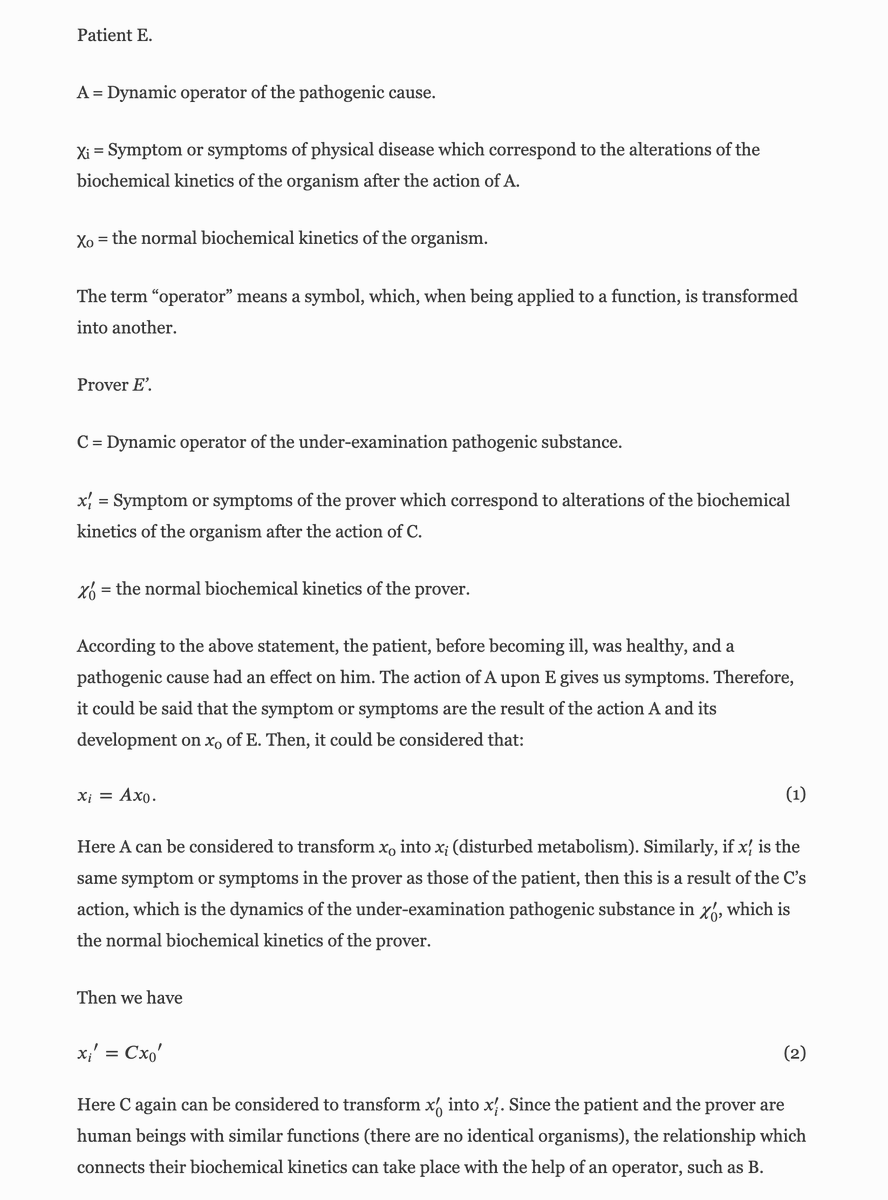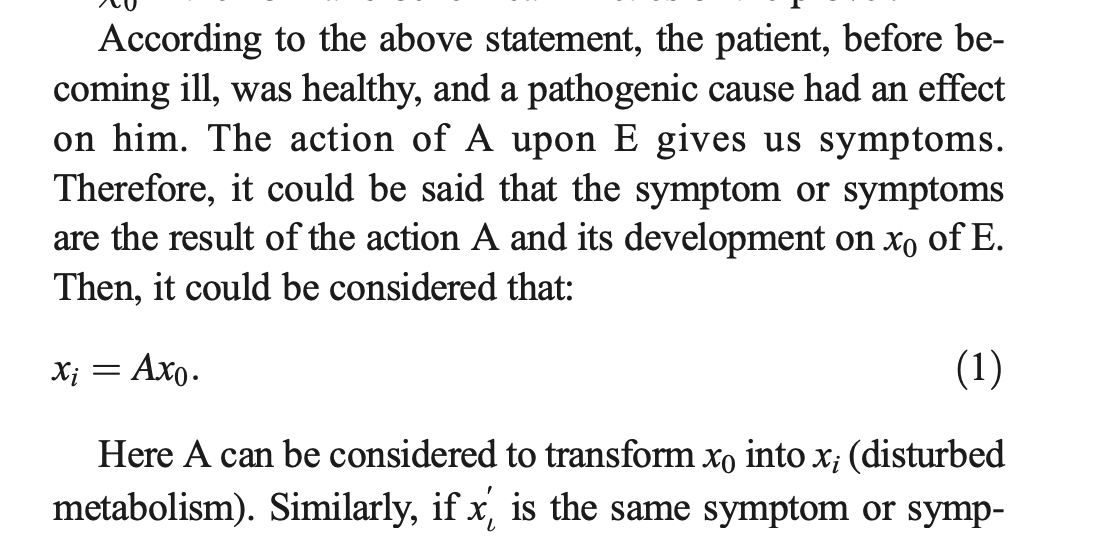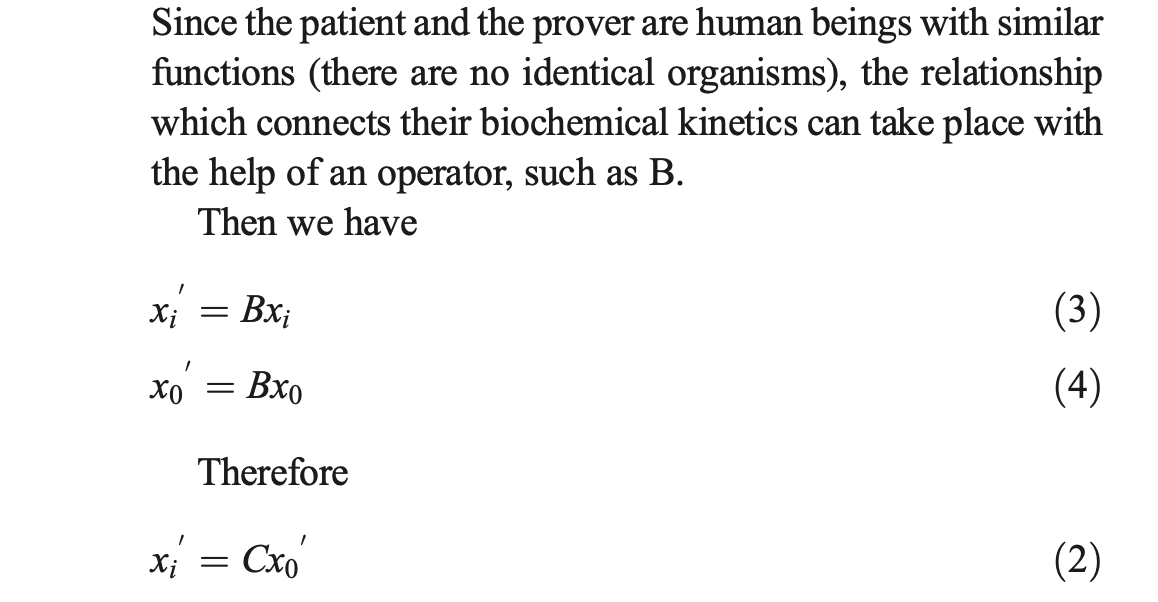It purports to prove—mathematically—that homeopathy will provide and effective treatment for COVID-19.
link.springer.com/article/10.100…
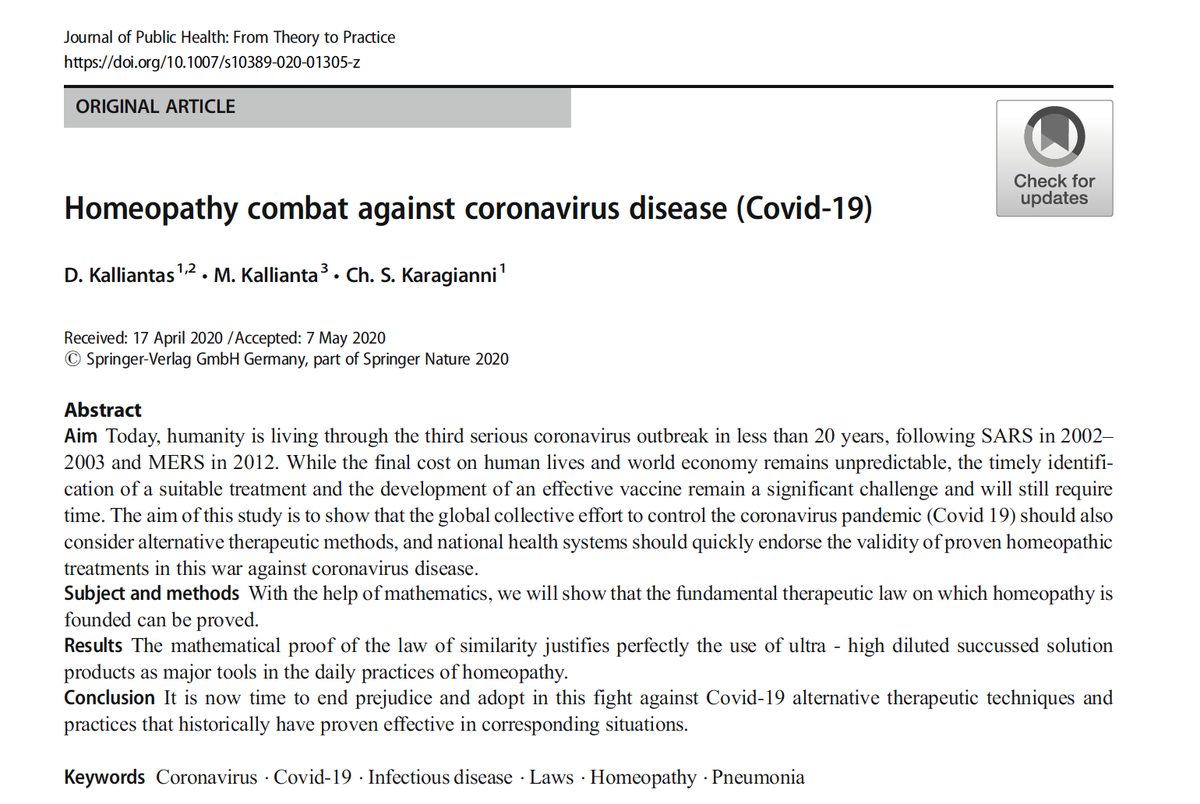
In short, it's no guarantee, as we discuss here: callingbullshit.org/tools/tools_le…
This paper shows that all sorts of stuff makes it through peer review.
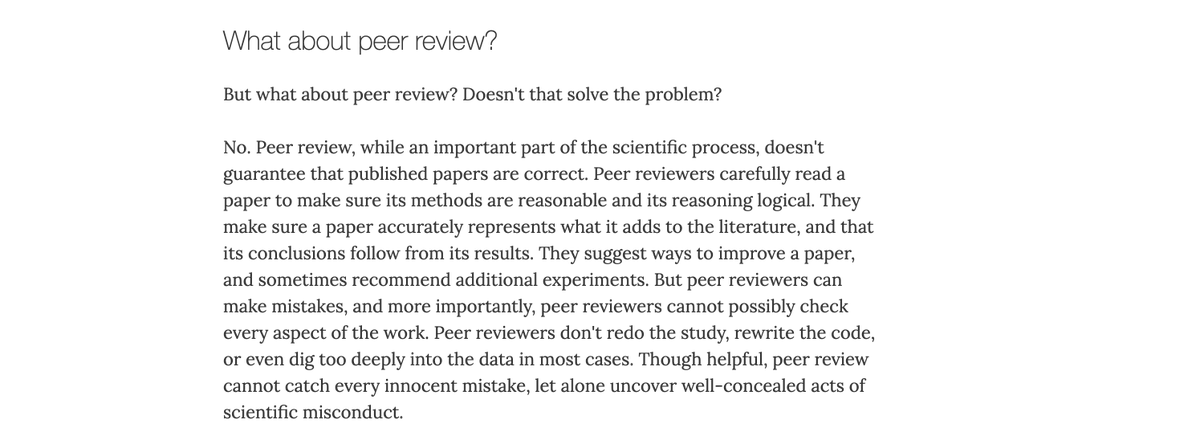

Few of us feel qualified to challenge information of this sort.
But back to this paper.
To understand it, you have to understand the concept of a *prover* in homeopathy.
That which causes symptoms in healthy person, when presented in properly diluted form, cures those same symptoms in one who is ill.
Other times, it's an indication that someone is selling you horse meat dressed up as filet mignon.
This is just a restatement of the assumptions of the model. But damnit it looks mathy now!
That's the whole paper.
You might want to slow down and go through it again.
I'll wait.
And there's the invertibility issue as well, but leave that under the rug where it belongs.
Bullshit involves language, statistical figures, data graphics, and other forms of presentation intended to persuade by impressing and overwhelming a reader or listener, with a blatant disregard for truth and logical coherence.
Here the consequence is to obfuscate using a caricature of mathematical notation.
learning.hccs.edu/faculty/robert…
It is hard to understand how anyone could consider this rewriting of ill-formed definitions to constitute scientific progress.
But if one wanted to deceive, it would be so easy to doing much better.
The purpose of treatment we thought would have been to restore normal physiology: In the language of this paper, to restore x_i to x_0.
But the paper doesn't show that C does this.
The central result, if you can call it that, is that C screws up the prover exactly the same way that the disease screws up the patient. C=BAB^-1
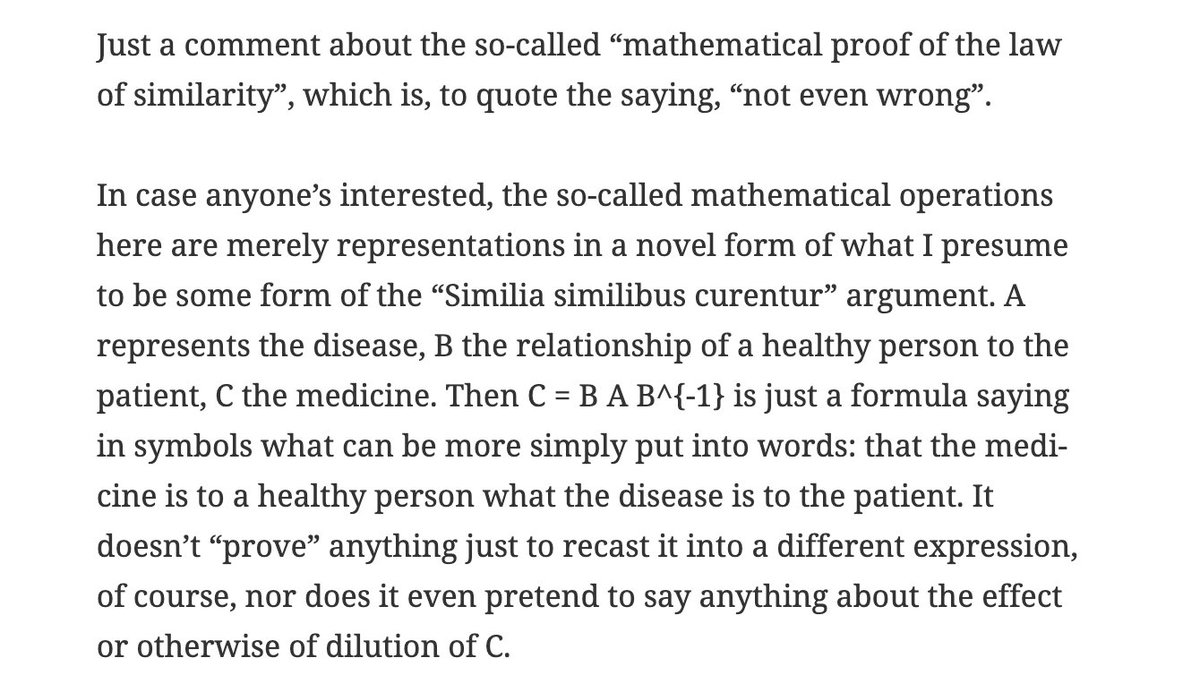
retractionwatch.com/2020/07/27/bla…
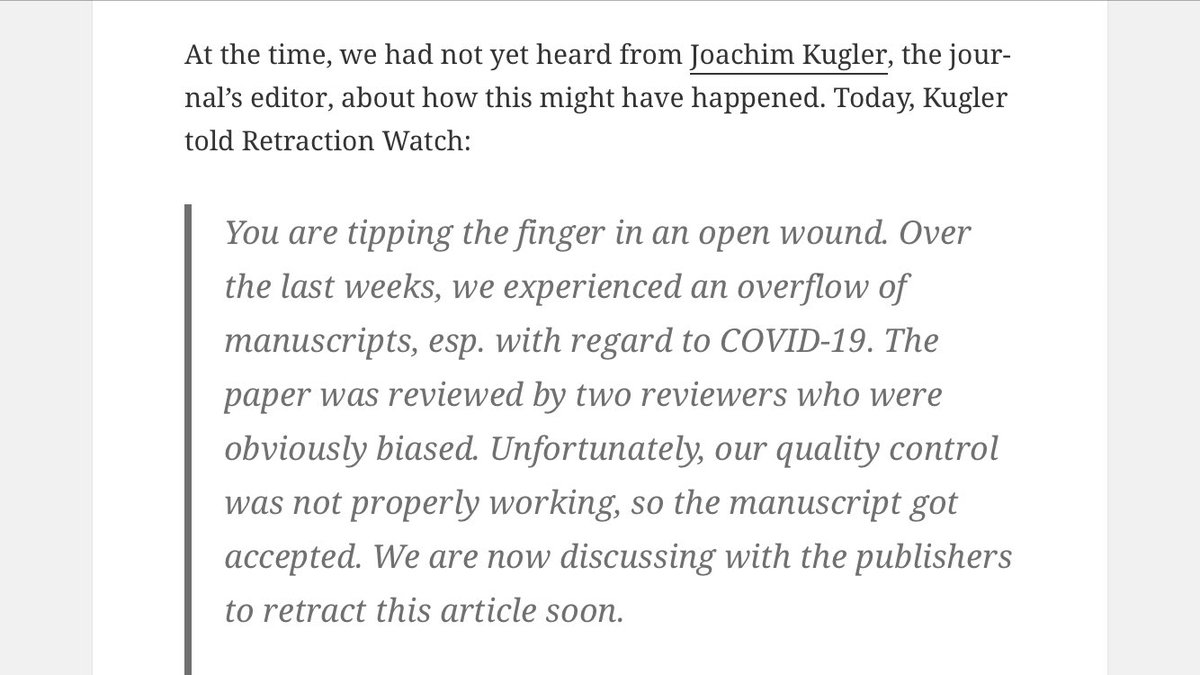
“There’s a massive pandemic that makes our journal super-relevant to life and death for billions of people, so naturally we dropped our editorial standards.”


